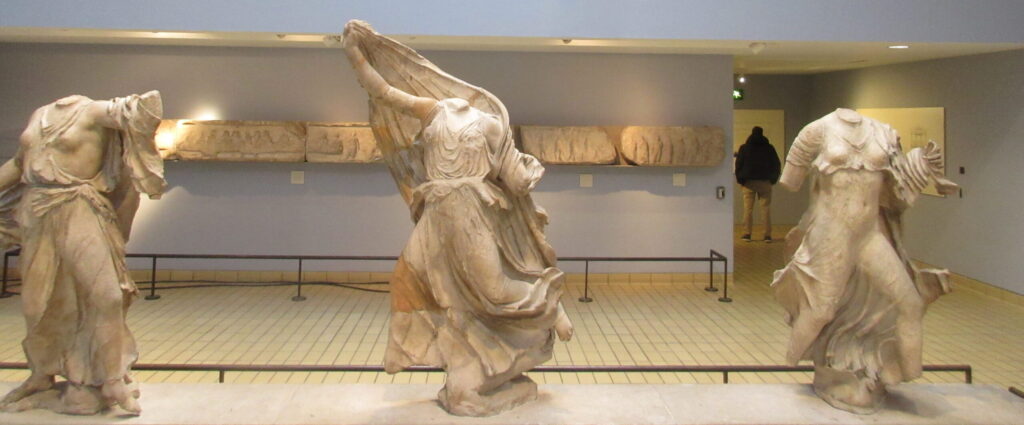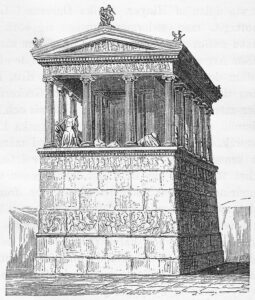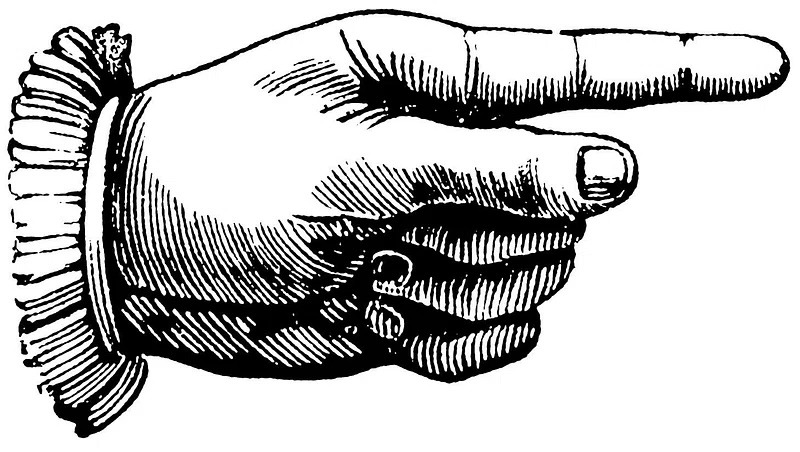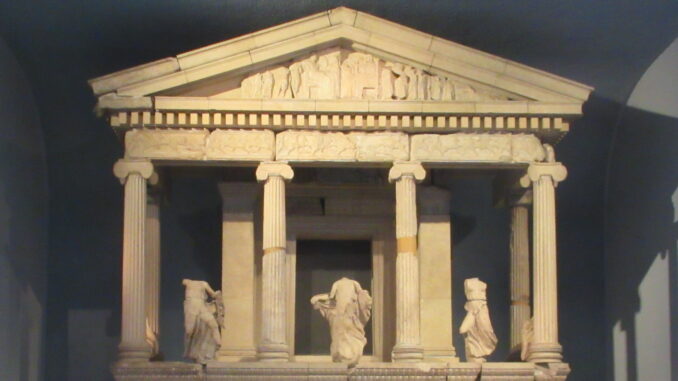
On one’s way to the Parthenon Gallery one walks through Room 17 of the British Museum and there, on the right, is what appears to be a Greek temple.
A pediment and entablature are supported by ionic columns, between which three female forms are ‘dancing’. Below this are two layers of frieze, with the thinner, top, layer showing forces capturing a city, and the bottom layer scenes of individual combat between warriors.
It isn’t actually a temple, nor is it Greek; it is the monumental tomb of Arbinas (sometimes written as Erbinna), a 4thC BCE ruler of Xanthos, one of the city-states of an ancient people called the Lycians, who occupied the area that is in modern-day Anatolia in Turkey. It was excavated by the British archaeologist Charles Fellows in the 1840s.
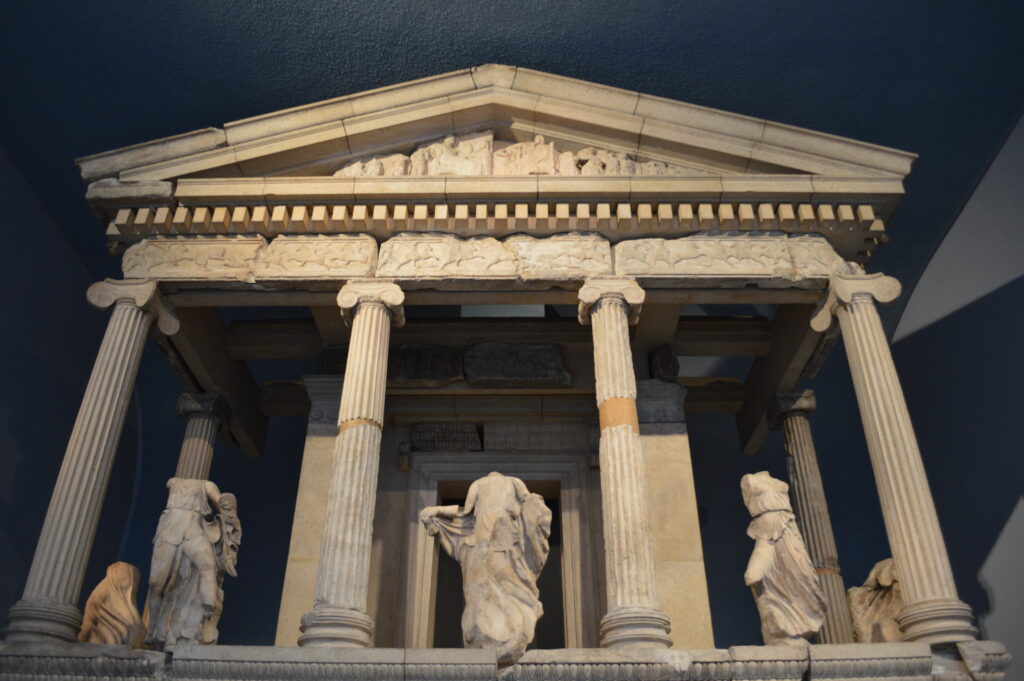
Lycia was an independent state or territory until falling under the Persian Achaemenid empire of Cyrus the Great in c540BCE. In the mid-5th century it came within the sphere of Athens, being part of the Delian League before coming under Persian control again from around 430BCE.
The monument dates from slightly after this time, probably around 390BCE. Arbinas, although the hereditary king of Lycia, seems to have had to capture Xanthos and other Lycian cities by force of arms. The funerary monument that he commissioned shows us the heavy influence of Greek styles across the region (even in non-Greek territories) overlaid with Persian and distinctly Lycian elements.
All of the many artefacts in Room 17 – the rebuilt structure, the sculptures of lions and other free-standing figures, the friezes – are from the monument. The female forms – there are some between the columns on the main structure, and others in the room – are believed to be sea nymphs, known as nereids, and it is they that have given their name to the construction.
Raised tombs are typical of Lycia. Known as ‘pillar tombs’, they have a stone burial chamber on a large pillar, which would be decorated with friezes and perhaps inscribed with descriptions of the deeds and greatness of the person buried within.
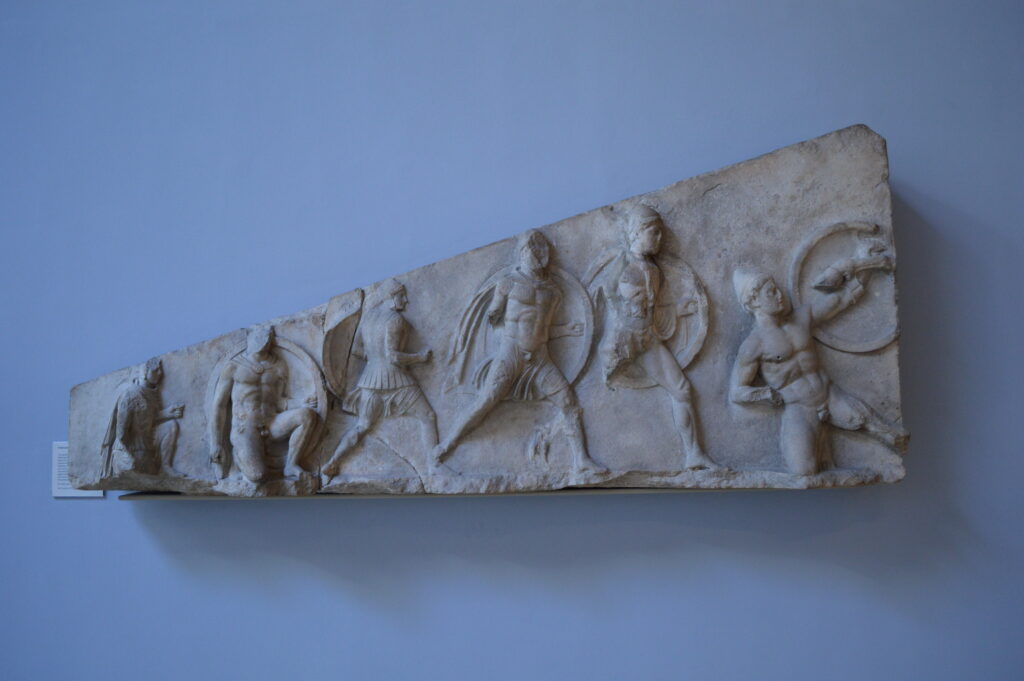
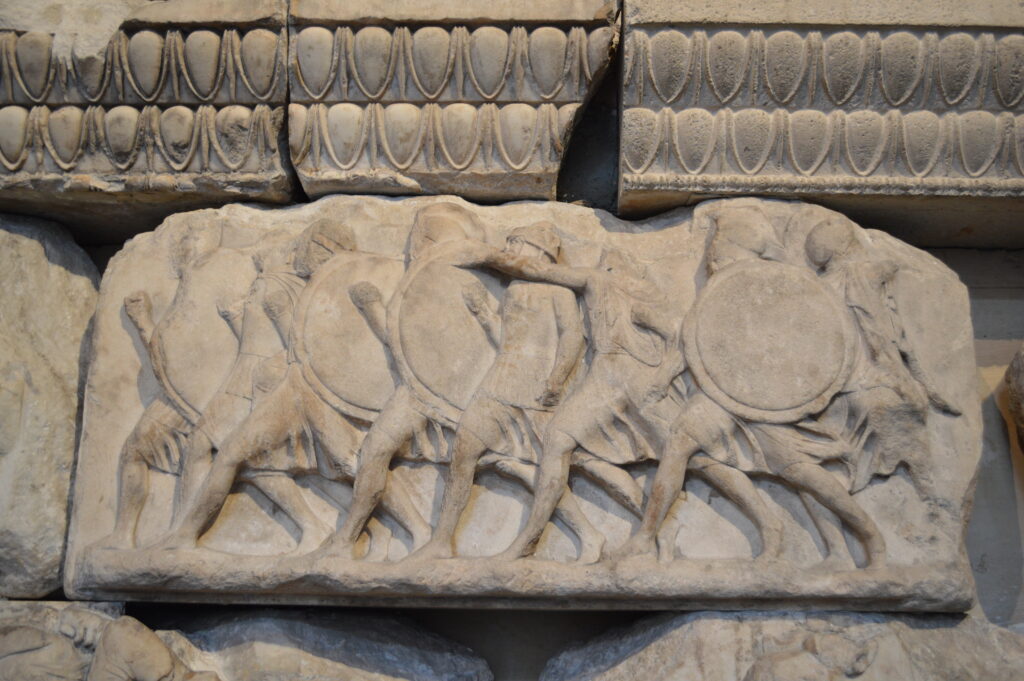
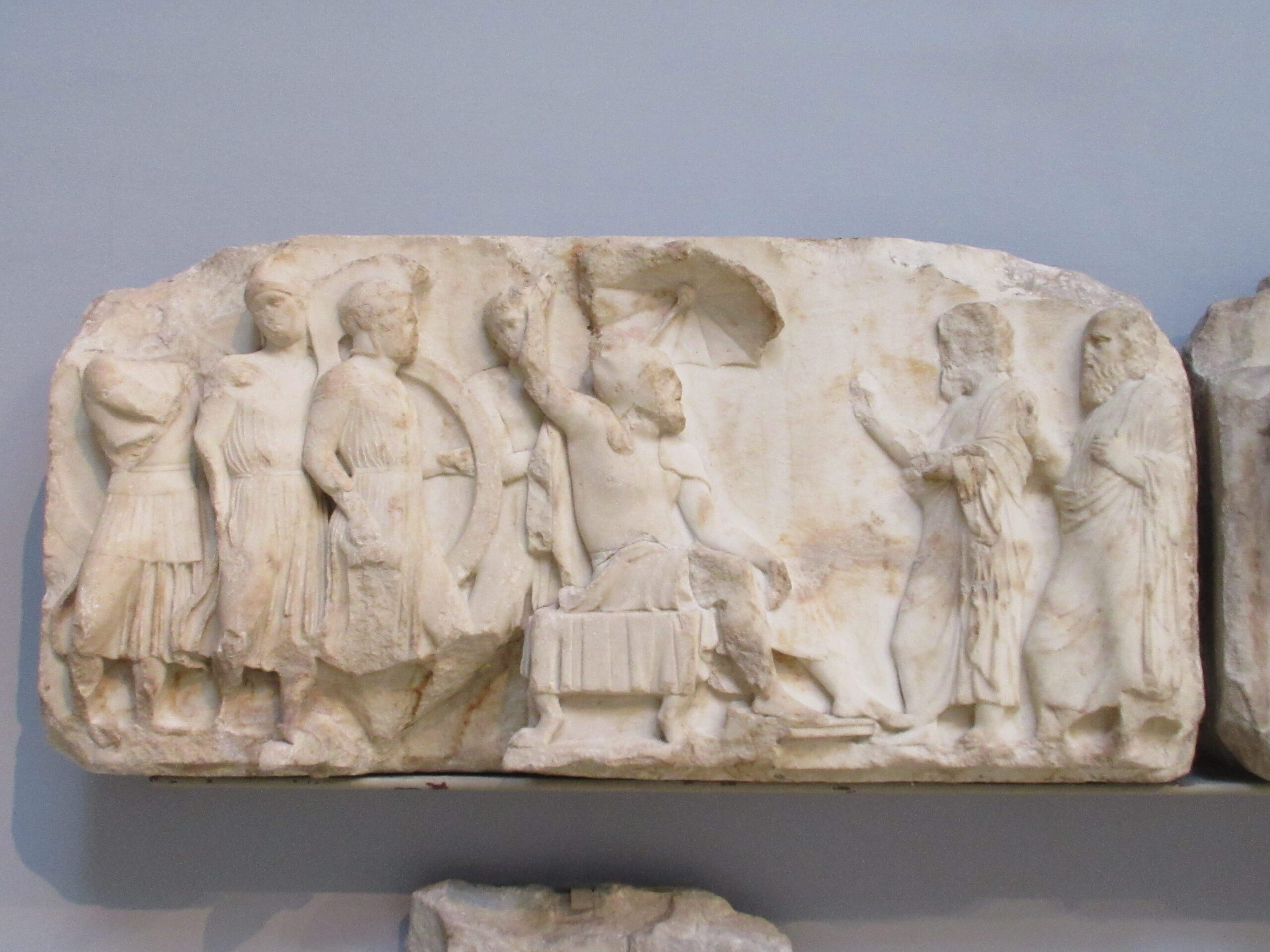
Arbinas’s monument is believed to be the main inspiration for the burial tomb of Mausolus – known as the Mausoleum of Halicarnassus, one of the seven wonders of the ancient world.

Fancy a visit to the British Museum with me? You can see availability and book a private tour via Tours by Locals here.

